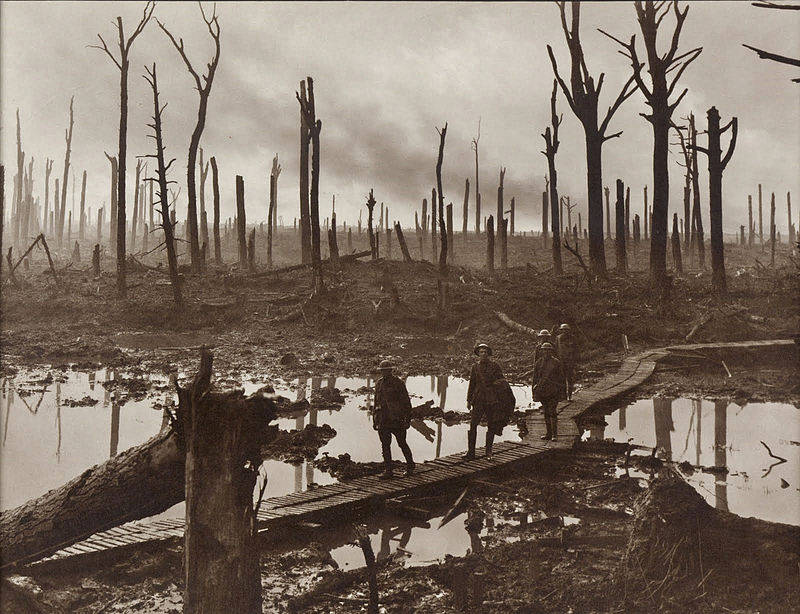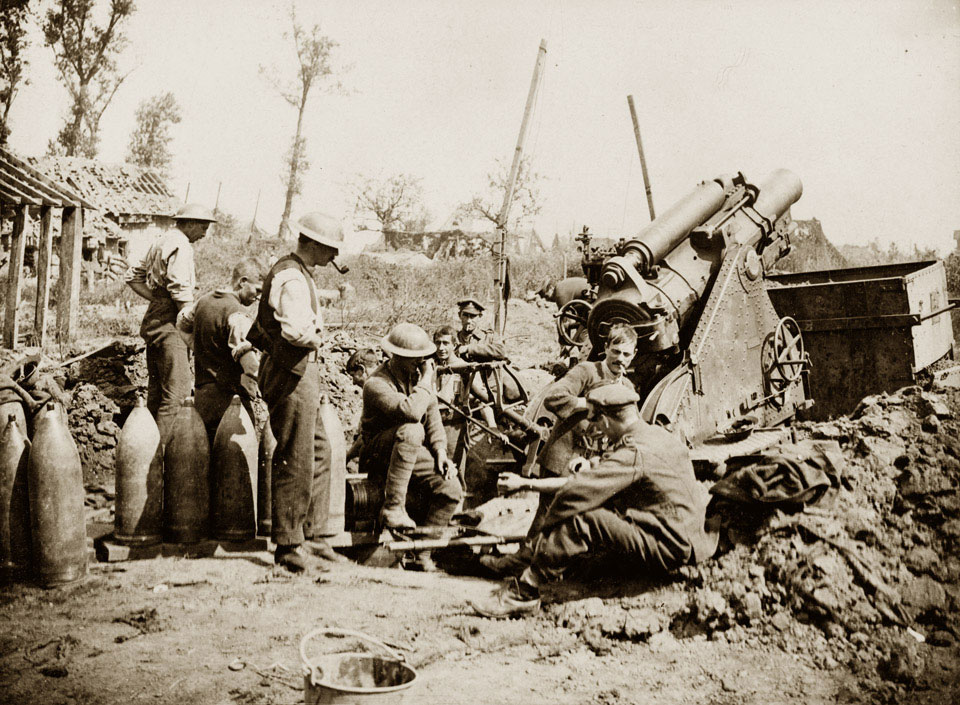The Battle of Passchendaele, also known as the Third Battle of Ypres, was a major World War I battle fought between July 31 and November 10, 1917. It took place near the Belgian town of Passchendaele, and it was part of the larger British offensive on the Western Front. The battle is infamous for its extreme conditions, high casualties, and relatively limited gains made by the Allies.

Australian gunners on a duckboard track in Château Wood, near Hooge, 29 October 1917. Photo by Frank Hurley.
Context: By 1917, the Western Front had become a stalemate with neither side gaining significant advantage. The British High Command, led by General Douglas Haig, planned a series of offensives to break the deadlock. The Battle of Passchendaele was one of these offensives, aimed at capturing the ridges south and east of Ypres to gain strategic advantage and threaten German submarine bases on the Belgian coast.
The Battle: The battle began on July 31, 1917, with a massive British and Commonwealth artillery bombardment targeting German positions. Following the barrage, British and ANZAC (Australian and New Zealand Army Corps) troops launched attacks on the German lines. However, the prolonged and heavy rain that fell throughout the campaign turned the battlefield into a quagmire of mud, making movement difficult and impeding the effectiveness of the artillery.
The fighting was brutal and characterized by some of the bloodiest and most futile assaults of the war. The soldiers had to contend not only with enemy fire but also with the treacherous terrain. Tanks, which were relatively new at that time, were used in the battle but faced numerous challenges navigating the muddy landscape.
One of the most notable episodes during the battle was the capture of the village of Passchendaele by Canadian forces on November 6, 1917. Despite their success in taking the village, the overall gains were minimal, and the offensive was called off a few days later, officially ending on November 10, 1917.
Outcomes and Impact: The Battle of Passchendaele resulted in heavy casualties on both sides. Estimates vary, but it is believed that the Allies suffered around 275,000 casualties, while the Germans had approximately 220,000. The gains made by the Allies were meager and did not significantly alter the strategic situation on the Western Front.
The battle’s legacy has been controversial, with many considering it a costly and unnecessary campaign that achieved little in terms of military objectives. The massive loss of life and the appalling conditions faced by the soldiers have made Passchendaele a symbol of the futility and horrors of trench warfare during World War I.
In summary, the Battle of Passchendaele was a protracted and deadly struggle on the Western Front, characterized by terrible conditions and heavy casualties, with limited territorial gains for the Allied forces.

